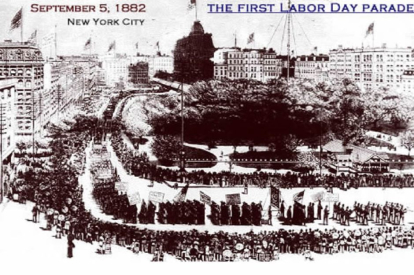Hispanic community celebrates Labor Day
Hispanics represent more than 17% of the nation's workforce.

(Shari Sirotnak-Unsplash)
This first Monday in September the country will celebrate Labor Day, a tribute to American workers on a holiday that dates back to the late 19th century. Labor Day recognizes the contribution workers make to the strength, prosperity and well-being of the United States.
Before becoming a federal holiday, Labor Day was incorporated into state legislation. New York was the first state to introduce a bill, but Oregon was the first to pass a law recognizing Labor Day, on February 21, 1887. Several states incorporated the holiday in subsequent years until finally, on June 28, 1894, Congress passed a law making the first Monday in September of each year a national holiday.
Origin of Labor Day
As recalled by the Department of Labor, the origin of how Labor Day was established it is unclear. Some records show that in 1882, Peter J. McGuire, General Secretary of the Brotherhood of Carpenters and Joiners and co-founder of the American Federation of Labor, suggested that a day be set aside for a "general holiday for the working classes." However, many believe that it was machinist Matthew Maguire, not Peter McGuire, who founded the holiday.
Recent research seems to support the claim that Matthew Maguire proposed the holiday in 1882 while serving as Secretary of the Central Labor Union in New York. According to the New Jersey Historical Society, after President Grover Cleveland signed the law creating a national Labor Day, Paterson Morning Call published an opinion piece stating that "the pen of remembrance should go to Councilman Matthew Maguire of this city, who is the undisputed author of Labor Day as a holiday." Both Maguire and McGuire attended the first Labor Day parade in New York City that year. It was Tuesday, September 5, 1882, twelve years before it was declared a national holiday.

First Labor Day
The first Labor Day holiday was celebrated on Tuesday, September 5, 1882 in New York City. By 1894, 23 other states had adopted the holiday and in 1894 it became a national holiday.
The Hispanic-American community and Labor Day
U.S. Labor Day moves away on the calendar from May 1, a date of Marxist origin when other countries celebrate this holiday. In fact, most Latin American countries celebrate the holiday on May 1.
In the United States, Hispanics represent more than 17% of the country's workforce and estimates predict that this figure will double in the coming years. The Hispanic population in the country exceeds 60 million people. In 2000, only ten states had more than 10% Hispanic population. By 2020 there were 23 and the latest update brings the figure up to 27, more than half of the total number of states in the country.
Essential workers in medical services, agricultural production, transportation and distribution of essential goods, care services for vulnerable populations, maintenance and cleaning activities, or water and electricity generation have a high rate of Hispanic workers. For example, according to the National Agricultural Workers Survey (NAWS), 77% of farmworkers identified as Hispanic in 2018.
The strength of the Hispanic community is evident and its representation is growing throughout the country. Hispanics are part of the United States and are increasingly present in all areas. The labor force is just one of them.












